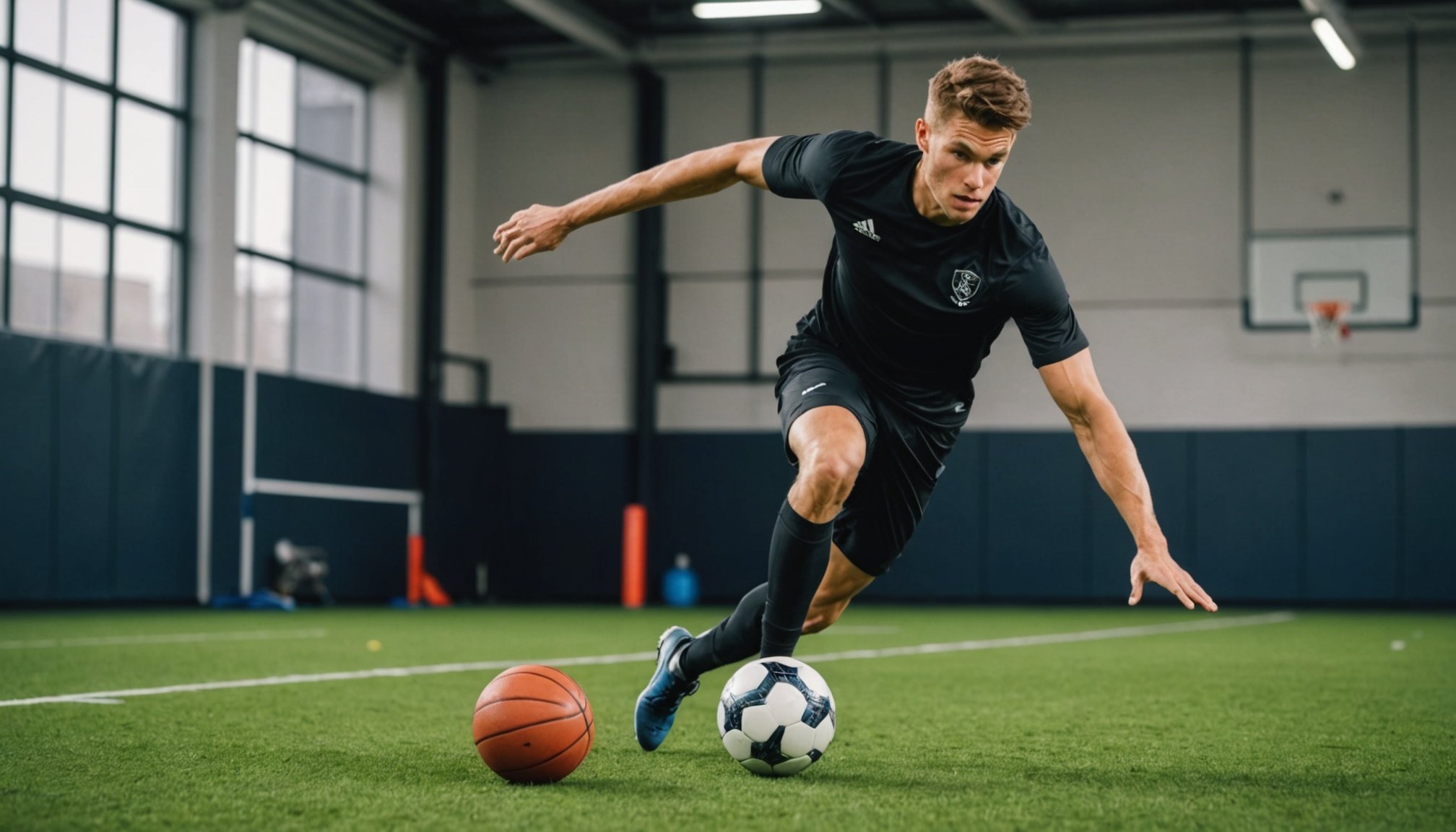Agility is a crucial aspect of athletic performance, particularly in sports like soccer and basketball, where quick changes in direction are often the difference between winning and losing. Athletes must possess not only speed but also the ability to rapidly adjust their body position in response to unpredictable game dynamics. This article seeks to explore various training techniques that can enhance agility, ensuring athletes can perform at their peak. We will delve into different drills, exercises, and methods meant to boost your performance on the field or court.
Understanding Agility in Sports
Before we discuss specific techniques to improve agility, it’s essential to understand what agility entails in the context of sports. Agility refers to the ability to quickly change the body’s position efficiently while maintaining control. For athletes in soccer and basketball, agility encompasses the capacity to sprint, dodge opponents, and quickly alter one’s pace or direction in response to the game’s flow.
Also to see : Top Stretches to Minimize Injury Risk for Competitive Cheerleaders: A Guide to Safe Performance
In these fast-paced environments, agility isn’t just about speed; it’s about integrating that speed with strength and coordination. Athletes must train their bodies to not only move quickly but also to stabilize and reposition themselves effectively after sudden movements. Adding a mix of plyometric and strength exercises into your training routine can significantly enhance your agility.
You might engage in specific drills using a ladder or cones, which promote foot coordination and quick reflexes. These practices condition your body to respond instinctively and efficiently, which is crucial during intense moments in games. Understand that agility training is not merely about practicing movements in isolation; it involves developing skills that translate directly to improved performance on the field.
This might interest you : How can athletes effectively use social media to build their personal brand and connect with fans?
Incorporating Speed and Direction Drills
One of the most effective ways to improve agility is through speed and direction drills. These drills focus on enhancing your quickness and ability to change direction swiftly, both of which are fundamental in soccer and basketball.
For a start, consider drills like the ladder drill, which helps develop coordination and foot speed. You can set up a ladder on the ground and perform various footwork patterns, such as high knees, lateral shuffles, and two-foot hops. This not only boosts your speed but also improves your overall body control.
Another beneficial exercise is the cone drill. Set up a series of cones in a zigzag pattern. Sprint to the first cone, pivot, and sprint to the next. This simulates game scenarios where you have to accelerate and decelerate rapidly while changing direction. The key is to maintain explosive speed while making sharp turns. Combine these drills with plyometric exercises like box jumps or lateral bounds to enhance your power and responsiveness.
Incorporating sprint intervals into your routine is also critical. Short, intense bursts of speed followed by rest periods can significantly improve your overall performance. Aim for sprints of 20 to 30 meters, focusing on perfecting your technique and form rather than just speed. As you acclimatize to these drills, gradually increase the intensity and complexity to keep challenging your body and improving your agility.
Strength Training for Better Agility
Strength training plays a vital role in enhancing agility. Stronger muscles provide better support during rapid movements, enabling athletes to execute quick turns and sprints without losing balance.
Incorporate exercises that build strength in your legs, core, and upper body. For instance, squats and lunges are excellent for developing lower body strength. They engage the glutes, quads, hamstrings, and calves—muscles essential for explosive movements. Additionally, incorporate plyometric exercises such as squat jumps and box jumps to improve your power and explosiveness. These exercises help condition your body to respond quickly to changes in movement.
Don’t overlook the importance of core strength either. A strong core stabilizes your body during sudden changes in direction. Incorporate planks, Russian twists, and medicine ball throws into your routine. These exercises enhance your stability and balance, which are crucial for maintaining control during fast-paced athletic competition.
Moreover, strength training should not be limited to lower body workouts. Upper body strength is equally important, especially for sports like basketball where shooting and passing are key. Consider incorporating push-ups, pull-ups, and shoulder presses to round out your strength training regimen. Remember, balanced strength development across all muscle groups contributes to improved overall agility.
Plyometric Exercises for Explosive Agility
Plyometric exercises, also known as jump training, are vital for athletes looking to improve their agility. These exercises emphasize quick and explosive movements, making them perfect for enhancing your ability to change direction swiftly.
Start with basic plyometric exercises such as jump squats and box jumps. These movements train your muscles to exert maximum force in short intervals. They build not only strength but also speed, which is crucial for athletes in sports requiring rapid transitions.
Another effective plyometric drill is the lateral bound. This exercise mimics the side-to-side movements common in both soccer and basketball. To perform a lateral bound, jump sideways from one foot to the other, focusing on landing softly on the balls of your feet. This helps you develop the lateral strength necessary for quick direction changes.
Additionally, incorporate agility hurdles into your plyometric training. Set up hurdles at varying heights and practice jumping over them in various patterns. This challenges your coordination and helps improve your footwork, essential for maintaining speed during games.
Remember that while plyometric training is beneficial, it’s important to focus on proper form to prevent injuries. Start slowly and ensure you’re comfortable with the movements before increasing intensity or volume. As you progress, you’ll notice significant improvements in your agility, allowing you to perform better in competitive sports.
The Importance of Recovery and Flexibility
While rigorous training is critical for enhancing agility, recovery and flexibility cannot be overlooked. These elements are essential for maintaining overall performance and preventing injuries.
After a rigorous session of agility drills and strength training, prioritize recovery. Adequate rest allows your muscles to repair and grow stronger. Incorporating rest days into your training schedule is crucial. During these recovery periods, engage in light activities such as walking or yoga to keep your body active without overexerting it.
Flexibility is equally important for athletes. Tight muscles can hinder your agility and increase the risk of injury. Incorporate a regular stretching routine, focusing on all major muscle groups, particularly those used in your sport. Dynamic stretching before workouts and static stretching afterward can enhance your flexibility. Consider including exercises like toe touches, hip flexor stretches, and quadriceps stretches in your routine.
Additionally, practicing yoga can significantly contribute to your agility. Yoga improves not only flexibility but also balance and stability. Many yoga poses enhance core strength, which is vital for maintaining control during rapid movements. By incorporating flexibility and recovery practices into your training, you’ll help your body perform at its best while minimizing the risk of injury.
Improving agility requires a multifaceted approach that combines speed, strength, and flexibility. By incorporating targeted drills, strength training, and plyometric exercises into your routine, you can significantly enhance your agility, benefiting your performance in sports like soccer and basketball. Remember to prioritize recovery and maintain flexibility to ensure your body is prepared for the demands of these intense sports. With dedication and the right techniques, you will notice a marked improvement in your ability to change direction, accelerate, and ultimately excel in your athletic pursuits.











